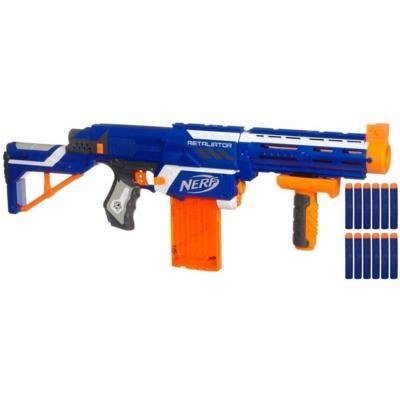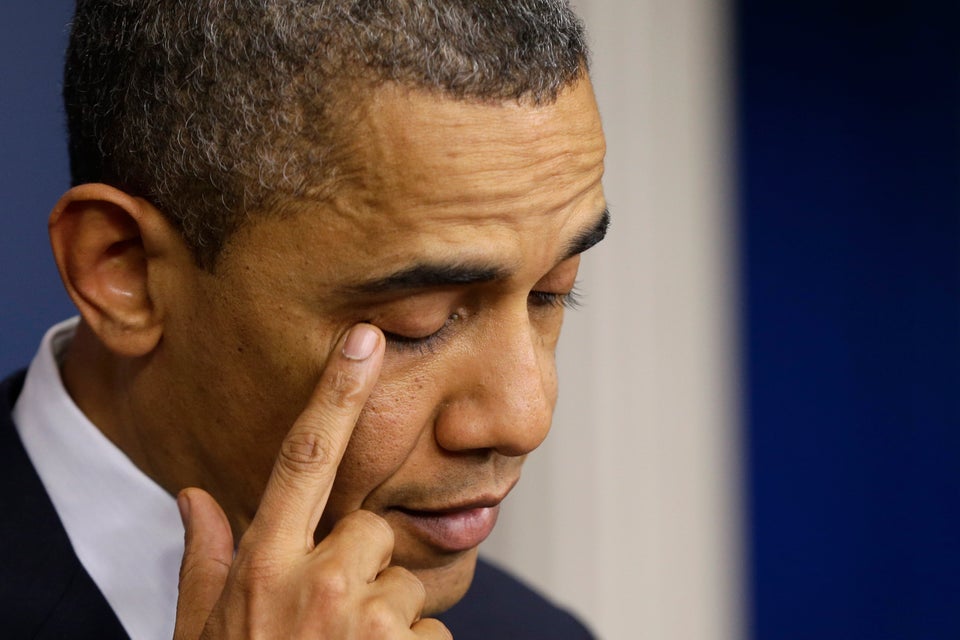
Three-year-old Jason Halili says he wants to be a police officer when he grows up. The New York City boy already has the requisite gear -- a uniform, hat and badge.
But this week, his mother confiscated one key piece of his aspiring cop identity, citing the massacre at an elementary school in Connecticut: She took away his toy gun.
“After what happened, I threw the gun away,” said Parashqevi Halili. “Even if it’s not a real gun, it sticks in his mind.”
As the toy industry works feverishly to move products in the midst of the crucial Christmas shopping season, experts anticipate that sales of popular toy guns could be constrained by public revulsion over the recent school shooting.
“This is going to really make parents closely monitor what their kids are playing with,” said Jim Silver, editor in chief of Time to Play Magazine, a toy review website.
In the past five years, toy guns -- “blasters” in industry parlance -- have seen dramatic growth in sales. Hasbro, the market leader, reported $414 million in wholesale sales of its Nerf line in 2010. This year, it will sell about $330 million of Nerf products, according to estimates from Gerrick Johnson, an analyst at BMO Capital Markets. Many of these brightly-colored guns contain features similar to popular assault weapons, such as automatic shooting of foam darts and ammunition clips.
“The guns are definitely distinct; no one would confuse them with an AK-47. But they’re the role-play equivalents,” said Johnson. “Any 8-year-old boy in America probably has the entire arsenal of Nerf at this point.”
Hasbro, a Rhode Island-based company, reinvented its line of blasters in the mid-2000s in order to offer more advanced, weapon-like features, a strategy that many competitors have since mirrored. Though its neon-hued products comply with a 1988 federal law that requires toy guns to be distinct in appearance from real guns, some industry experts are surprised they have yet to attract much public scrutiny. Hasbro did not respond to requests for comment.
“I find it a bit ironic that these toys are selling so well and no parents seem to be having issues with them,” said Johnson. “There’s a national backlash against guns, but toy guns are one of the biggest properties.”
Traditionally, toy companies have reacted swiftly to headline-capturing gun-related tragedies. After the 1999 Columbine shooting, toy manufacturers focused on action-figure lines that came with weapons other than guns, such as harpoons and drills, the Milwaukee Journal Sentinel reported at the time. In 2000, the Toy Manufacturers of America, a leading trade group, also launched a discussion on the possibility of imposing “voluntary standards” for the industry that would restrict the sale of violent toys.
Individual toy companies are still very sensitive to possible controversy surrounding their products. “I would guarantee all toy manufacturers will review their 2013 lines to see if they need to tweak an item,” said Silver.
After the terrorist attacks on Sept. 11, 2001, several toy companies pulled products deemed potentially sensitive. Mattel, the world’s largest toy manufacturer according to the company's website, removed one accessory included with one of its Max Steel action figures, a card which described a villain attacking the World Trade Center. That year, Lego also pulled a construction kit that included a drawing of a plane attacking a city skyline prior to the holiday season, the Orange County Register reported at the time.
The attack propelled other military-related toys into prominence: Sales of G.I. Joe, for instance, another Hasbro property, rose 46 percent in 2001.
Toys R Us, one of the nation’s largest toy retailers, would not comment on whether it was developing any new policies in response to the tragedy in Newtown. A spokeswoman said that the company was “wholly committed to the safety of children,” bringing up a policy instituted in 1994 which bans the sale of any toy gun that resembles or could be altered to resemble a real gun. That policy was also a reaction to a national tragedy: a child who was shot and killed when a police officer mistook his toy gun for a real gun.
Parents worried about toy guns today say it’s not the resemblance of toy guns to real ones that bothers them -- it’s our culture’s fascination with weapons’ on a whole, from toy guns to movies and video games.
“You can’t help but think about how you introduce your children to items that lead to violence,” said Veronica Savage, a mother of two in New York City.
